The colon: structure and function
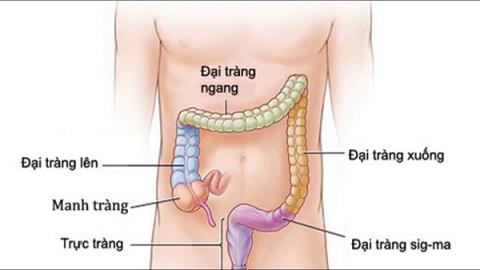
The human digestive system must be no stranger to readers. Indeed, they play an important role in the digestion and metabolism of food. The colon is an essential component of that apparatus. What is the structure of the colon? What function does the colon have for our body? Let's find out with SignsSymptomsList in the following article!
content
- 1. Location of the colon
- 2. Size of the colon
- 3. Structure of the colon
- 4. Function of the colon
- 5. Methods to protect the health of the colon
1. Location of the colon
The colon, also known as the large intestine, is the last part of the digestive system, an extremely important part of the abdomen.
The colon forms an inverted U-shaped frame, surrounding the small intestine (small intestine). Going from right to left, the colon consists of the following components:
- The cecum and appendix: The cecum is the place where the small intestine empties into the colon, which is very short.
- Colon, including:
+ Colon ascending.
Left colonic angle.
+ Transverse colon.
Right angle of colon.
+ Descending colon.
+ The sigmoid colon.
+ Rectum.
+ Anal canal.
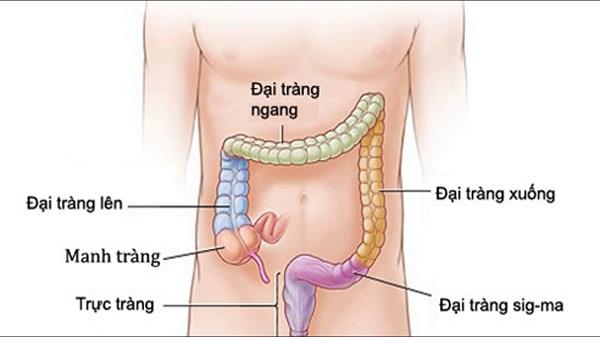
Illustrate the major components of the colon.
See more articles: Is colitis dangerous?
2. Size of the colon
In the body of each person and each sex, the colon has a different size. The colon can be from 1.4 to 1.8 m long, but it is only half the length of the small intestine.
The cecum diameter is up to 7cm. But then gradually decrease to the sigmoid colon. Then it bulges out in the rectum to form a rectal balloon.
According to a study, the size of the large intestine in Vietnamese people is:
- Length 148.2 cm
- Diameter of caecum 5.92 cm
- Diameter of descending colon 2.89 cm
3. Structure of the colon
The colon is divided into three main parts: the cecum, the colon, and the rectum.
3.1. The cecum and appendix
The shape of the cecum is sac-like. Between the small intestine and the cecum is the ileocecal valve. The valve keeps the contents of the large intestine from flowing back up into the small intestine
The appendix is shaped like a worm, about 3-13 cm long, about 8 cm on average. The appendix is in fact a remnant of the evolutionary process in humans and apes. The appendix is due to degeneration of the first part of the cecum.
The cecum and the appendix are a closely related mass. Normally, the cecum is located at the right iliac fossa angle. The base of the appendix is attached to the medial posterior surface of the cecum. The way the appendix stump is determined is that it is located midway from the navel to the right anterior superior iliac spine. Based on can determine if abdominal pain is appendicitis or not.
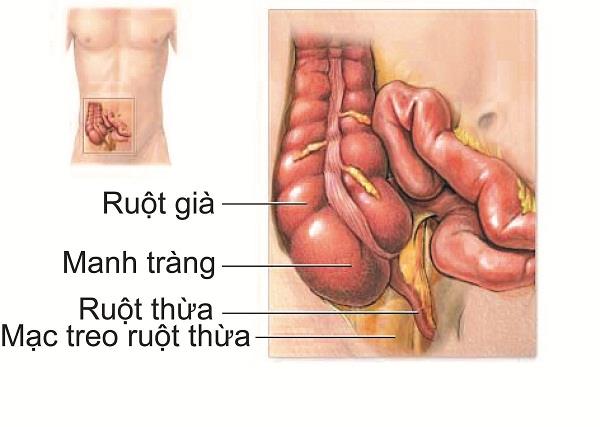
Illustrate the position of the cecum and appendix in the abdomen.
See also: Lower abdominal pain: Common causes in men and women .
3.2. Colon
The ascending colon ascends from the cecum along the right side of the abdomen. Until it meets the liver, it curves to the left to form the right colonic angle.
Next is the transverse colon. The transverse colon passes through the abdomen. Going from the angle of the liver to below the spleen, it curves downward to form the left colonic angle.
The descending colon runs along the left side of the abdomen and descends to join the sigmoid colon.
The sigmoid colon is S-shaped, with two fixed ends and a movable middle part.
3.3. Rectal
Is a straight tube, about 15 cm long and ends at the anus that opens to the outside of the body. From the front to the front, it is straight, so it is called the rectum. However, when viewed from the side, the rectum curves along the curve of the sacrum.
3.4. Anal tube
Continuing with the rectum, the anal canal passes through the pelvic diaphragm and terminates by the anus.
4. Function of the colon
The colon has a different function than the small intestine. Its main function is to receive digested food from the small intestine. Then absorb water, electrolytes from the food and with the decomposition with bacteria that make food residues into feces. Holding stool until the amount is enough, the colon will contract to create peristalsis and excrete stool through the rectum.
4.1. Absorption activity
The main function of nutrient absorption is the small intestine, not the large intestine. But there are some substances that will have to wait until they reach the large intestine before they can be converted into nutrients.
Absorption occurs in the first half of the large intestine. Thanks to the mucosal folds, the absorption capacity of the large intestine mucosa is very large.
Absorption of Na+ ions
Na+ is absorbed into the blood, followed by Cl- to neutralize electricity. The NaCl solution then creates an osmotic pressure that brings water from the intestines into the bloodstream.
Absorb water
You know, 1 liter of water from the small intestine is transferred to the large intestine and then absorbed. When discharged into the environment by faeces, they only remain about 80-150 ml. The longer the stool stays in the large intestine, the more water is absorbed. That's why we often get constipated when we hold a bowel movement.
Drug absorption
Some drugs such as sedatives, antipyretics, analgesics, etc. can be absorbed in the large intestine. Therefore, many cases of patients, especially children, are prescribed to take medicine from this route to cure diseases in the form of suppositories.
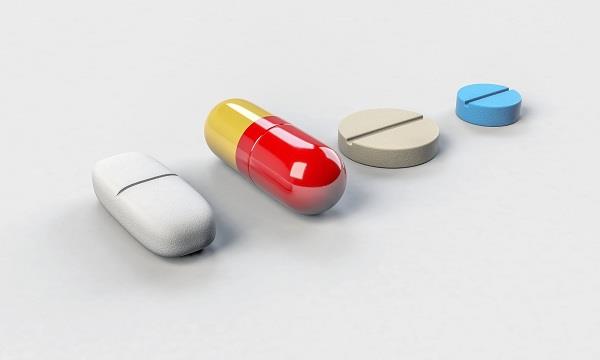
Some drugs can be absorbed in the colon.
Salt absorption
This is one of the essential elements for the body, which is absorbed in the first part of the large intestine.
NH3 . Absorption
Some bacteria in the large intestine will absorb NH3 into the bloodstream. To avoid too much NH3 being absorbed, causing hepatic coma, constipation and colitis should be avoided. Colonic lavage and enteral antibiotics are an appropriate option in these cases.
4.2. Excretion activities
Gum
The lining of the large intestine is responsible for the secretion of mucus. Mucus lubricates and protects the intestinal wall from scratches. As well as from the harmful effects of bacteria, which are abundant in feces and cause stools to stick together.
Residual substances
In addition, the digestive tract is also the place where the body's residues and drugs are excreted after taking them.
Lesson K+
K+ is excreted, increasing the concentration of K+ here. K+ secretion in the large intestine is controlled by aldeosterone.
4.3. Expel faeces
Most of the time, the rectum does not contain stool. After the stool has been shaped and ensured the necessary softness, as well as sufficient quantity, it will be excreted. If there are all the conditions, convenient for good defecation, the cerebral cortex actively performs the push to push the stool out.
Normally, stools are ¾ water and ¼ solids. In which 30% is bacterial corpse, 10-20% is inorganic matter, 2-3% protein, 30% is residue from food and digestive juices. The smell of stool is caused by the digestive products of bacteria.
Gas in the large intestine is caused by inhaled gas, produced by bacteria, and by diffusion from the bloodstream. Gas is produced in the large intestine up to 7-10 liters/day. Mainly due to the metabolism of undigested food. Some foods that increase gas production include: beans, cabbage, broccoli, corn, vinegar.
See more: Inner millet: The hero supports digestion
4.4. Large intestine bacteria
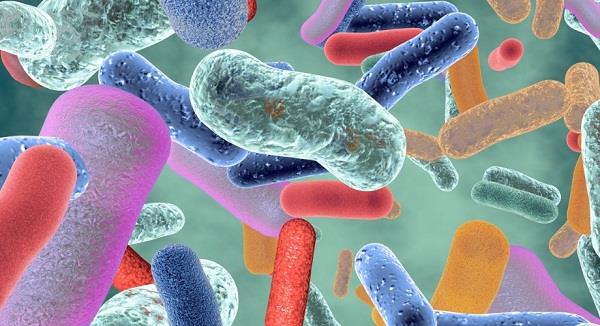
The university contains a lot of resident bacteria, mainly anaerobic bacteria.
At birth, our digestive tract is completely sterile. However, within 3-4 weeks, a normal bacterial population in the gut will be established. Most of them are anaerobic bacteria. Bacteria in the gut are responsible for metabolizing bile salts and synthesizing vitamin K and B vitamins. Vitamin K is especially important because the amount of vitamin K in food is not enough to maintain a proper blood clotting process.
5. Methods to protect the health of the colon
By building a healthy lifestyle you can have a healthy colon. Consists of:
5.1. Reasonable and scientific diet
- Build a balanced and harmonious diet between protein, sugar and fat. Increase green vegetables, fresh fruits, vegetables rich in fiber, sweet potatoes, bananas and papaya rich in potassium .... Drink enough water every day to avoid constipation.
- Limit eating fresh foods such as spring rolls, blood pudding, raw vegetables, salads of all kinds, pork intestines, etc. to avoid intestinal infections.
- Avoid eating processed meats, such as hot dogs, smoked meats, and cold cuts. If you eat regularly and for a long time, these meats will increase your risk of rectal cancer , or stomach cancer and many other health problems.
- Limit the intake of substances that cause intestinal irritants such as coffee, alcohol, tobacco, and hot fried foods that are difficult to digest.
- Should eat foods that are easy to digest, divided into many small meals, eat less in the evening to reduce the burden on the intestines.
- Do not buy food in reserve and leave food for too long in the refrigerator. Because they also have potential health risks that many people do not know. You need to regularly clean the refrigerator, do not consider the refrigerator as an all-powerful object that can prevent all viruses, bacteria ...
- You can gently massage the area around the navel in a clockwise direction to stimulate bowel movements.
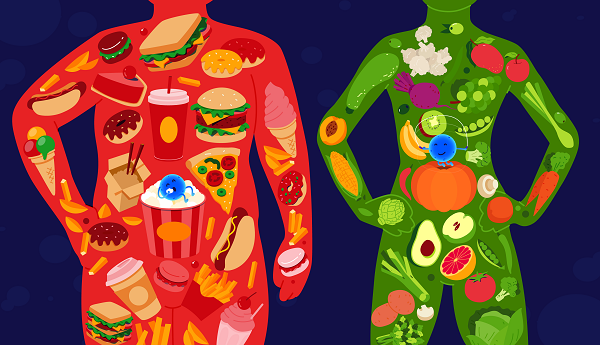
Building a scientifically balanced diet not only enhances health but also prolongs life.
5.2. Stay calm and optimistic
Control stress, tension, anxiety. Because this prolongs depression or reduces bowel movements, ensuring a happy, comfortable, and healthy spirit.
At the same time, when the mind is comfortable and happy, it will help strengthen the body's resistance
5.3. Daily exercise
In addition, increasing physical activity and sports enhances health and resistance. Daily exercise, suitable for each person's health.
5.4. Periodic health examination
Try to maintain the habit of regular health check-ups to detect possible risks of dangerous diseases early.
See also: Colon cancer: Find out the causes and why should be screened?
Thus, we have learned interesting information about the shape and structure of the colon. The colon plays many important roles in the body. So when the colon is disturbed, it causes significant health problems. From now on, let's build yourself a scientific and healthy lifestyle to enhance the health of your body as well as your colon! If you have any questions about health issues, do not hesitate to share them with us. Thank you for always accompanying SignsSymptomsList!
Doctor Nguyen Thanh Xuan